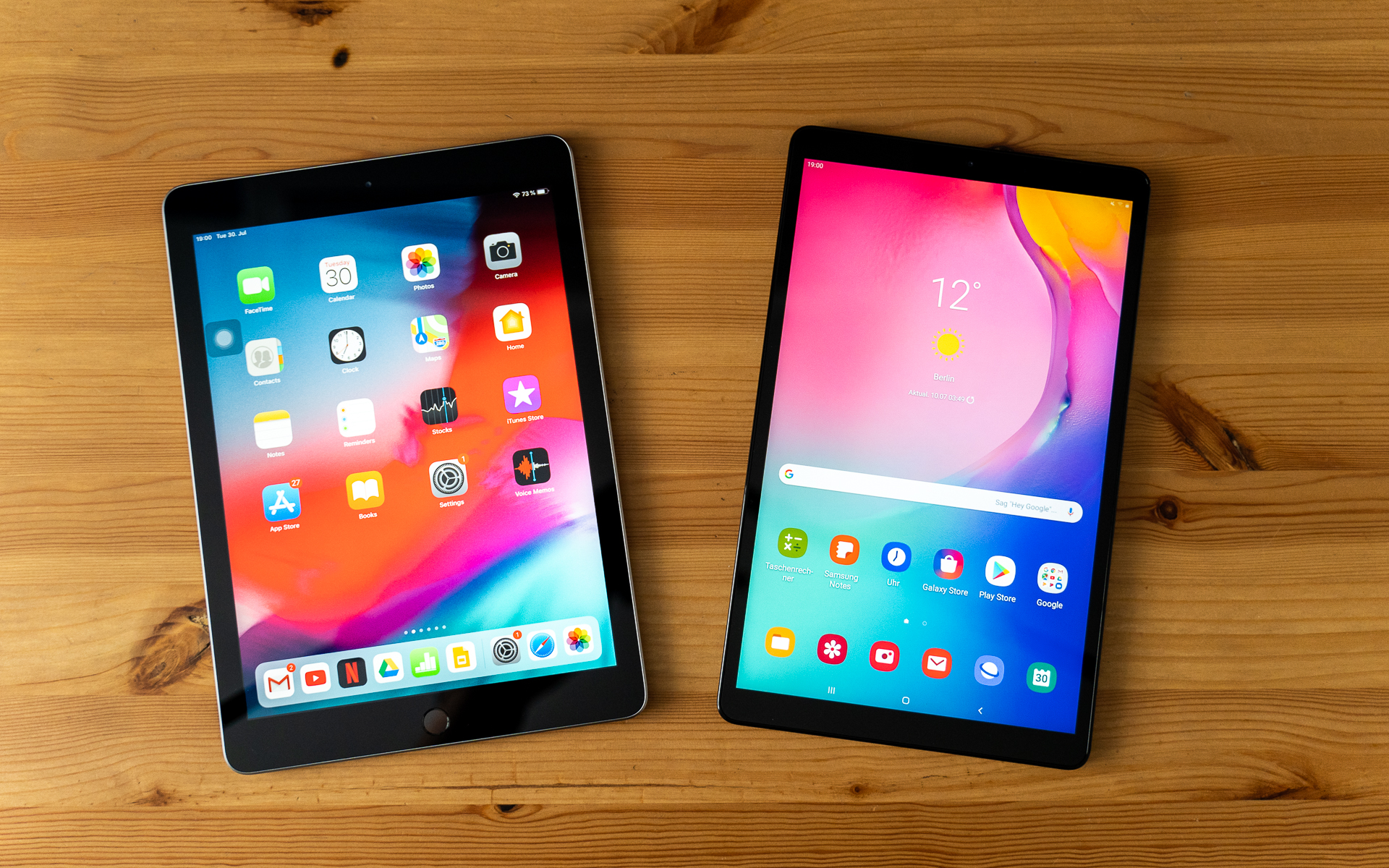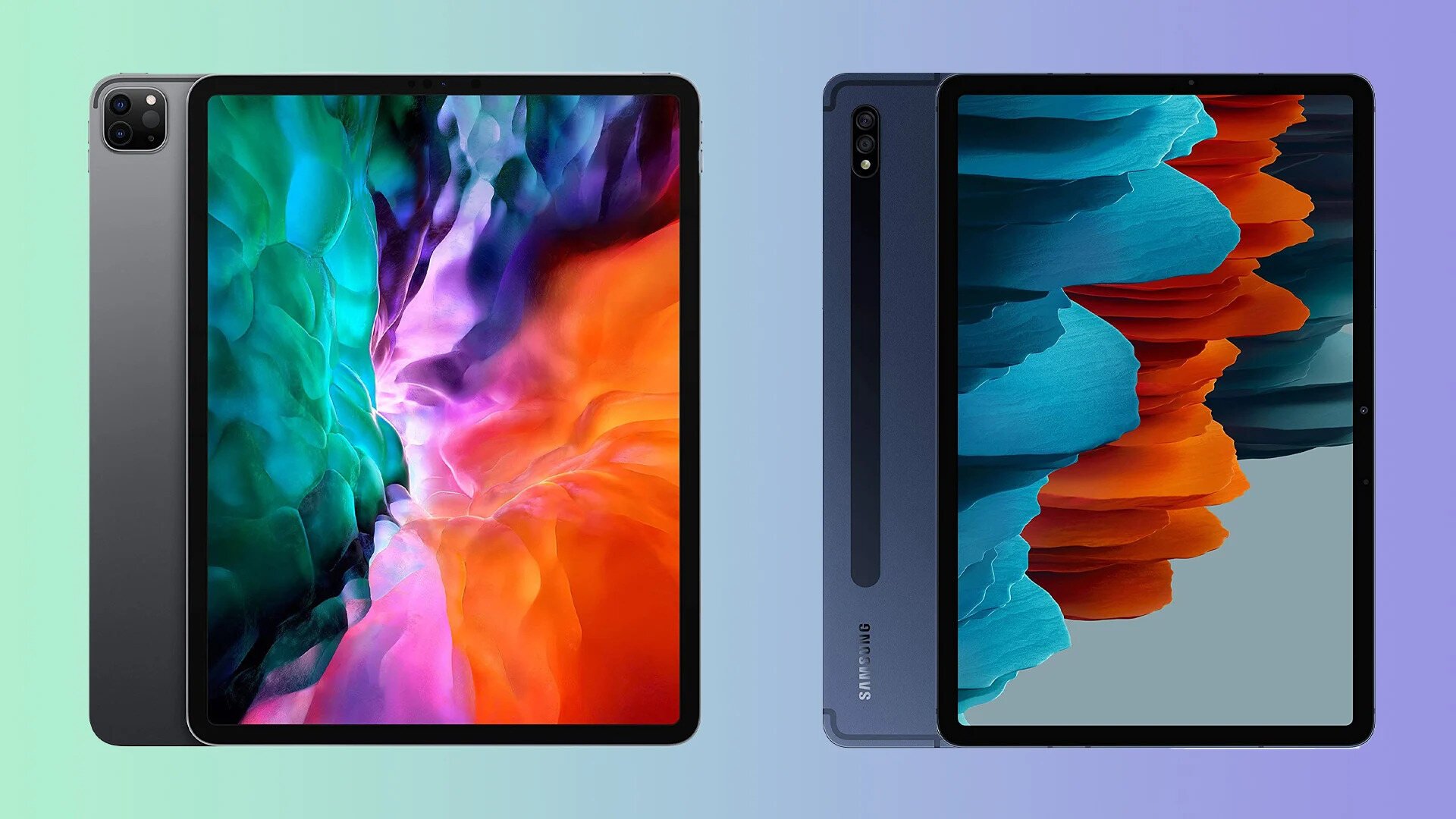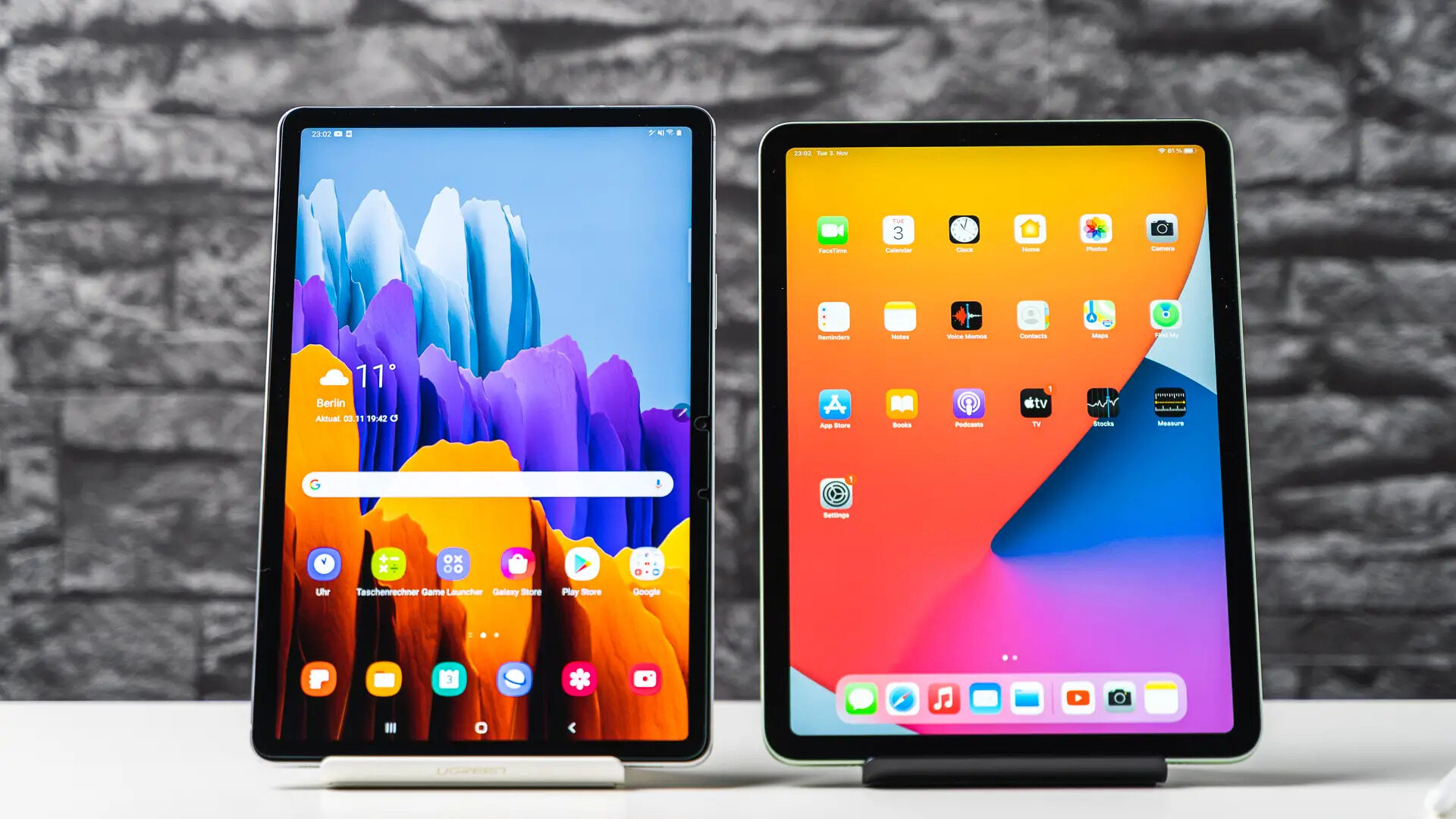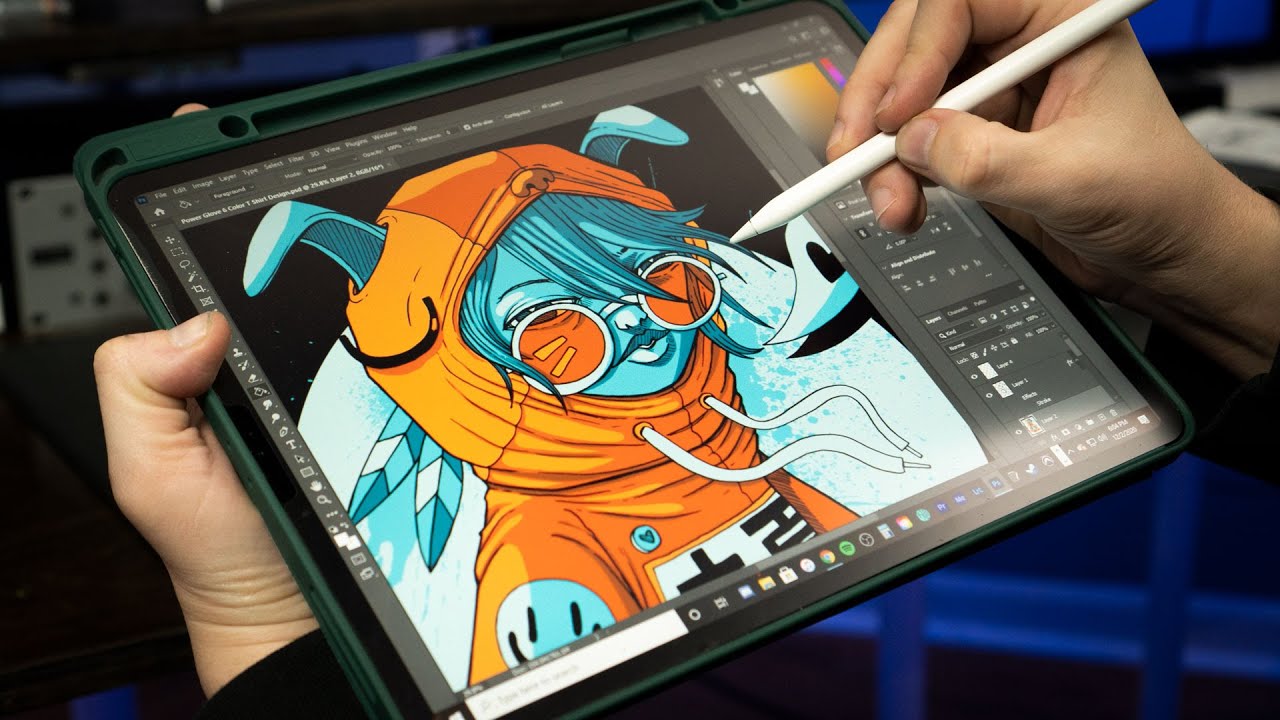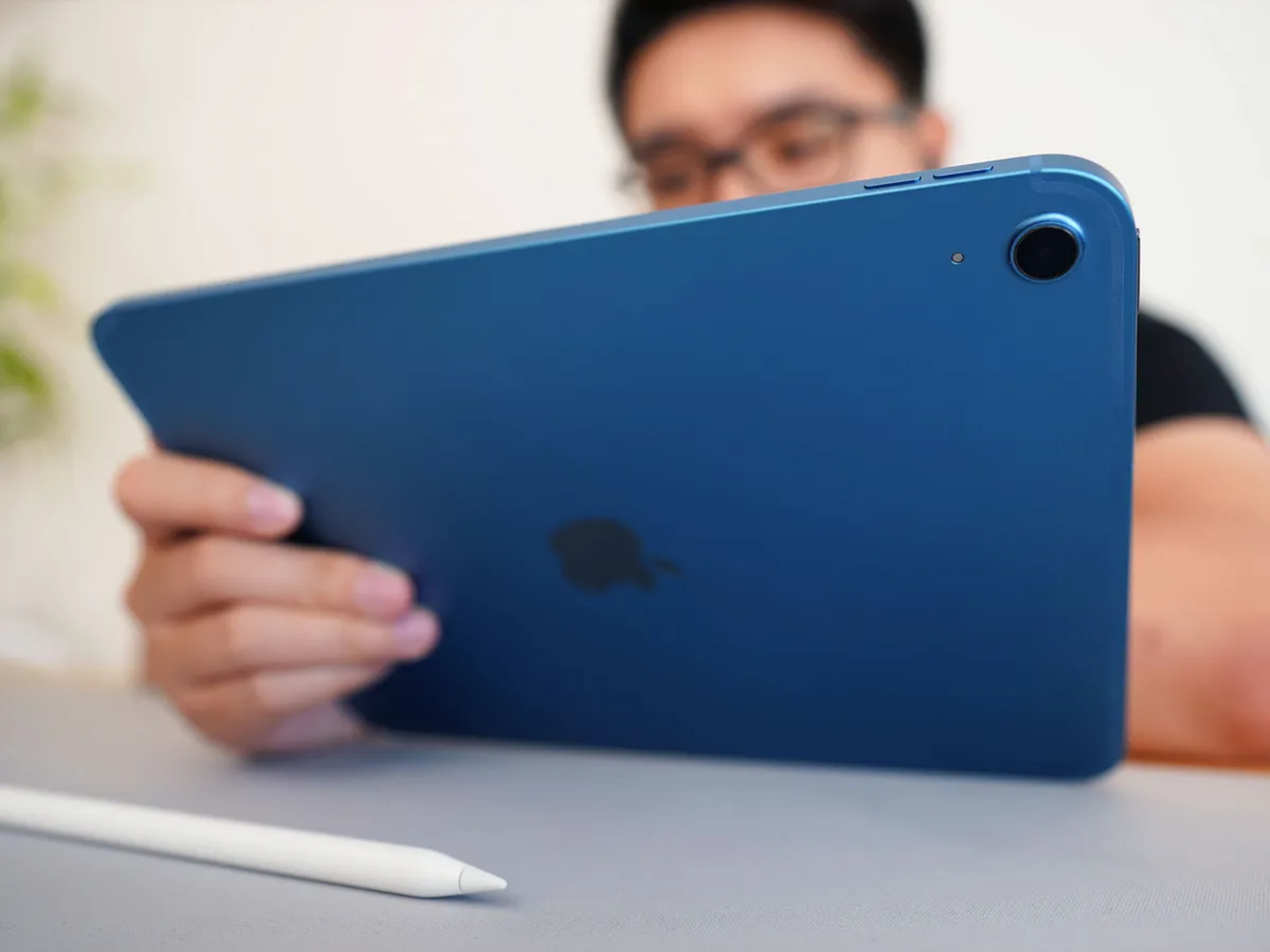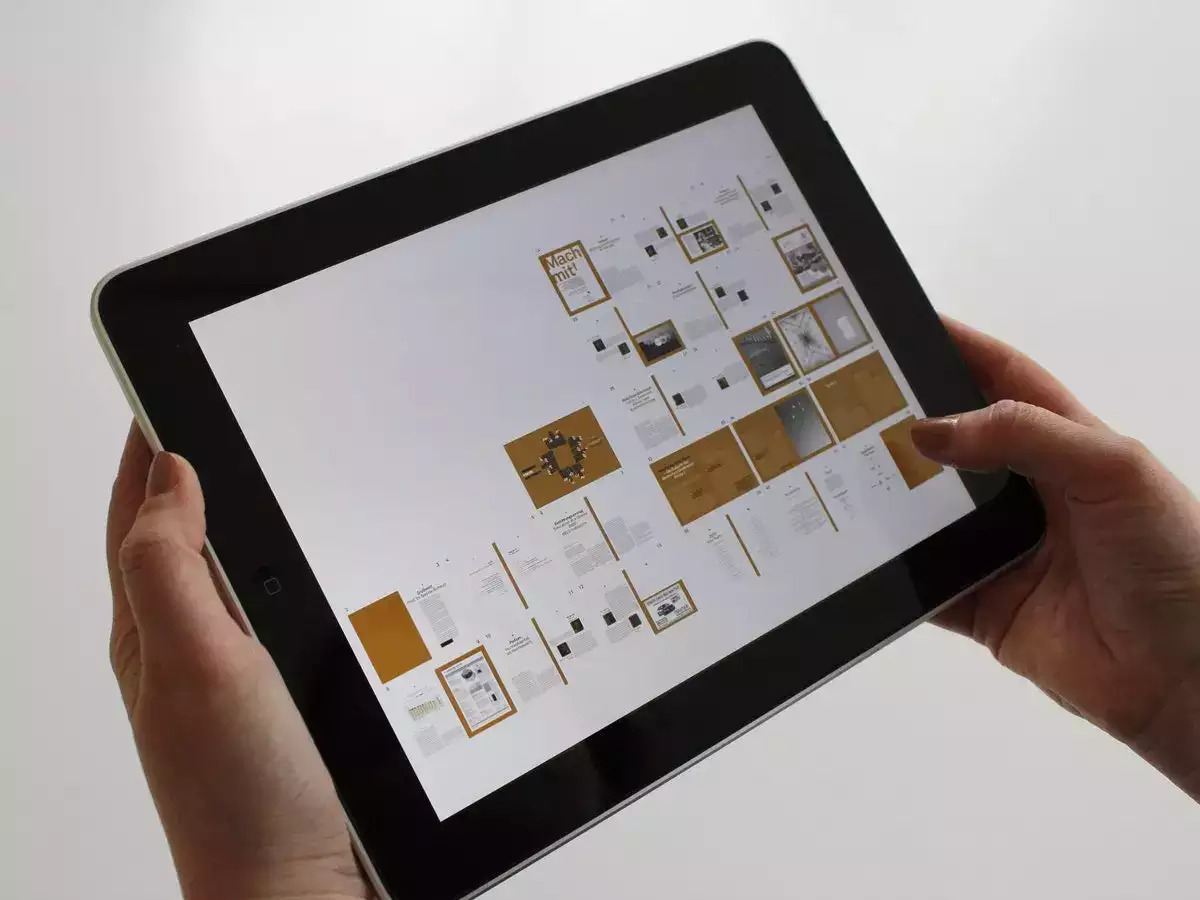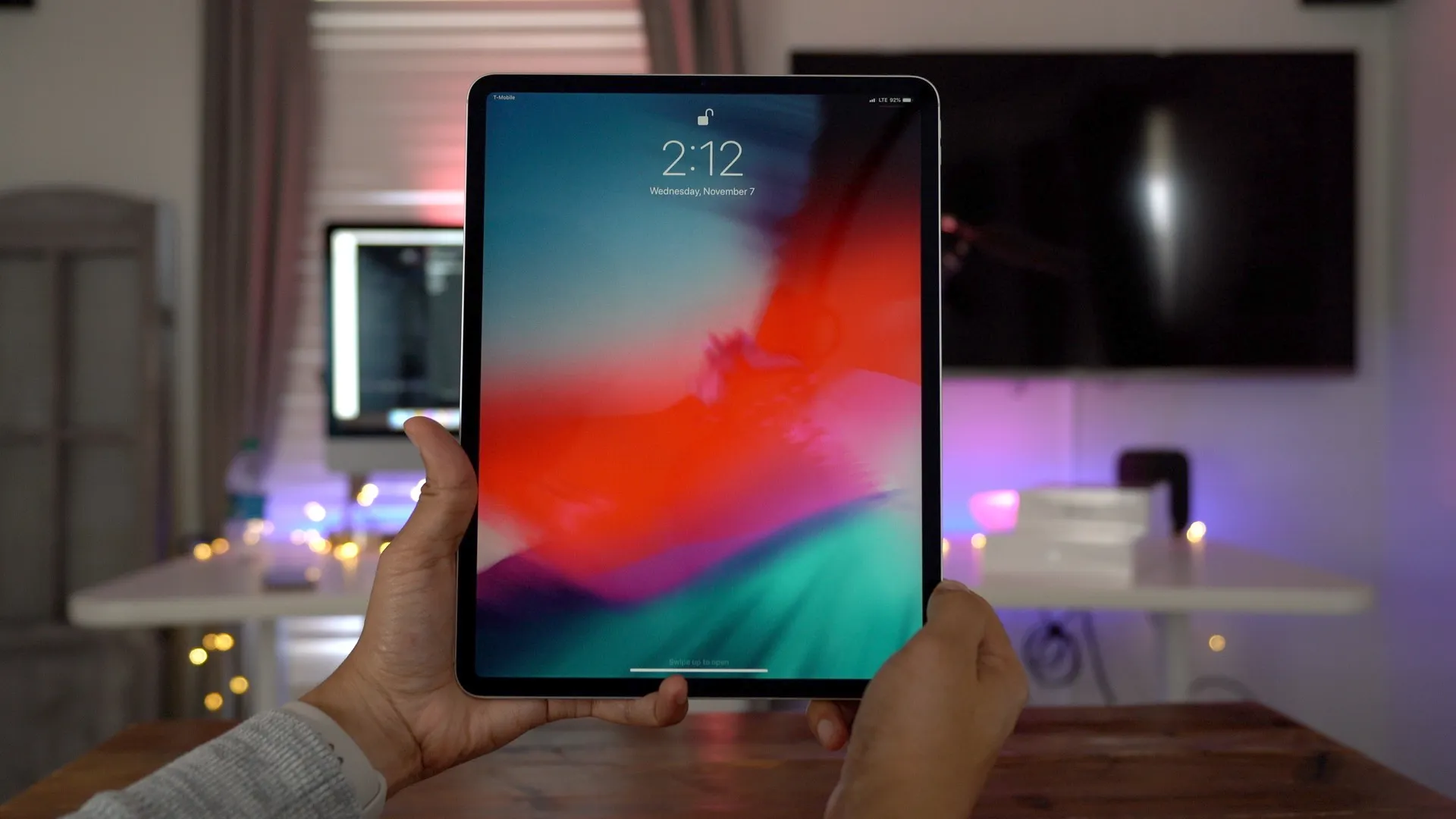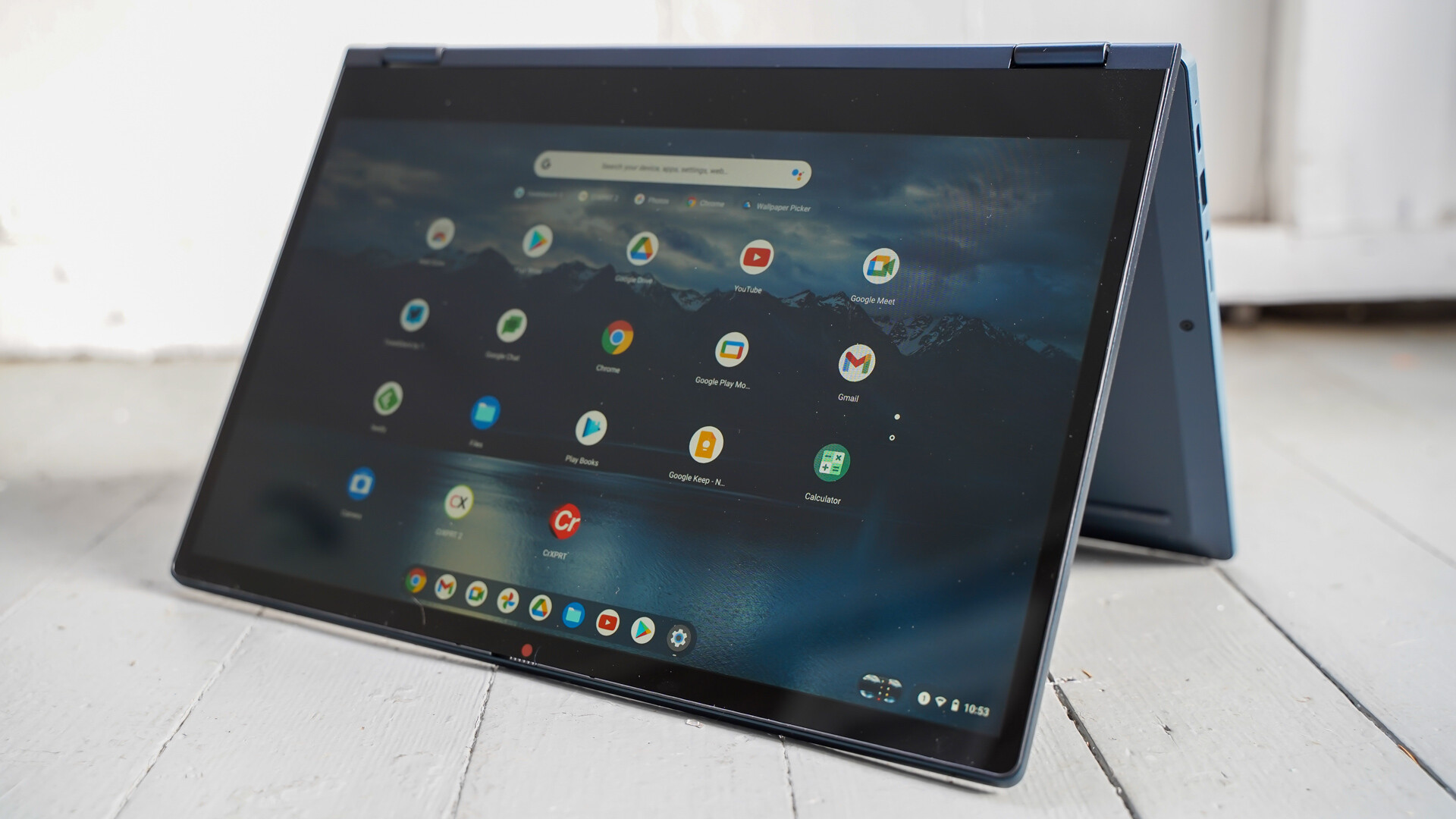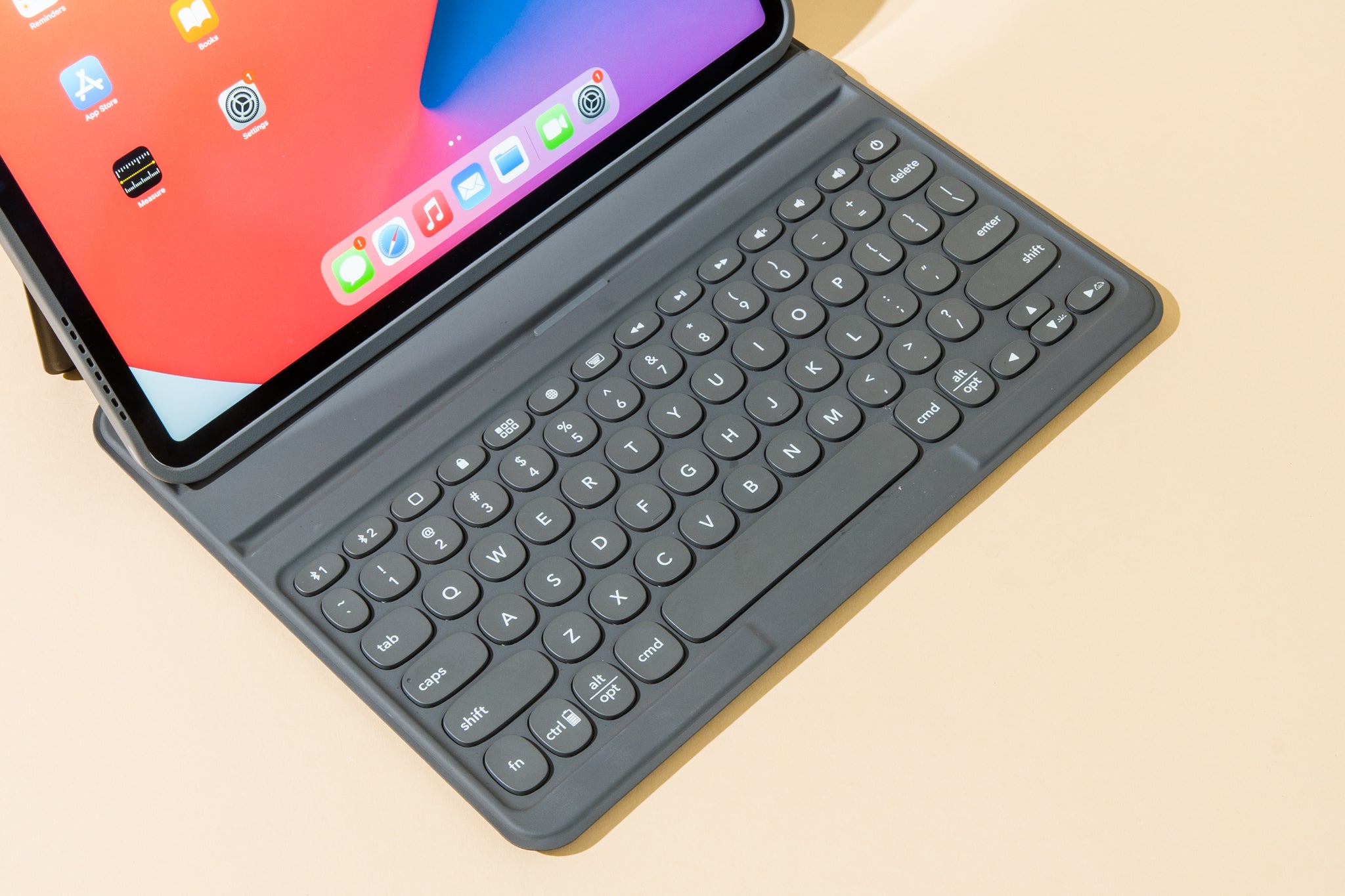Introduction
Welcome to the world of technology, where gadgets have become an integral part of our daily lives. One such innovation that has revolutionized the way we access information, communicate, and entertain ourselves is the iPad and tablet. These portable devices have gained immense popularity in recent years, offering an array of features and functionalities that cater to our every need.
Whether you’re a tech-savvy individual or just someone looking to stay connected on the go, understanding the basics of the iPad and tablet is essential. In this article, we will explore the definition, key features, differences, benefits, popular brands, top apps, and tips for choosing the right iPad or tablet for your needs.
So, sit back, relax, and embark on this journey to discover all that these incredible devices have to offer. Whether you’re a student, professional, or simply someone who enjoys staying up-to-date with the latest trends, there’s no doubt that iPads and tablets have become indispensable tools in our modern world.
As technology continues to evolve and improve, the iPad and tablet market remains at the forefront, captivating users with their sleek designs, powerful performance, and plethora of applications. With their intuitive interfaces, touchscreens, and portable nature, these devices have become a seamless extension of our lives, enabling us to work, play, and connect with others on the go.
So, let’s delve deeper into the world of iPads and tablets, unveiling their secrets and unlocking their potential. Whether you’re a novice or an experienced user, there’s always something new to discover. From the sleek and sophisticated to the budget-friendly options, there’s an iPad or tablet out there for everyone.
Definition of iPad and Tablet
Before we dive into the features and differences, let’s start by understanding the basic definition of an iPad and tablet. Simply put, an iPad and tablet are portable electronic devices that offer similar functionalities to a computer but in a more compact and convenient form factor.
The iPad, developed by Apple, is a line of tablets that run on the iOS operating system. It combines the functionality of a computer with the portability and touch screen capabilities of a smartphone, making it a versatile and powerful device. iPads come in various models, sizes, and storage capacities, providing users with options to suit their needs and preferences.
A tablet, on the other hand, is a broader term that encompasses a range of devices from different manufacturers, including Apple, Samsung, Microsoft, and many more. Tablets can run on different operating systems, such as iOS, Android, or Windows. They offer similar features to iPads, including web browsing, email access, media consumption, gaming, and productivity tools, but with some variations in design, specifications, and user interfaces.
The main distinguishing factor between an iPad and a tablet lies in the specific brand and operating system it runs on. iPads are exclusively manufactured by Apple and run on the iOS operating system, while tablets encompass a wider range of brands and operating systems.
Both iPads and tablets are designed to provide users with a portable and versatile computing experience. They have touch screens, built-in cameras, storage capacity, Wi-Fi or cellular connectivity, and access to a vast array of applications through their respective app stores. These devices have become popular choices for individuals who want the convenience of a computer without compromising on mobility.
Now that we have a clear understanding of what iPads and tablets are, let’s explore the key features that make them stand out in the technology landscape.
Key Features of iPad and Tablet
When it comes to the key features of iPads and tablets, there are several aspects that make them indispensable devices in our daily lives. Let’s take a closer look at some of the standout features:
- Portability: One of the primary reasons people opt for iPads and tablets is their portability. These devices are lightweight and slim, allowing users to carry them easily wherever they go. Whether you’re commuting to work, traveling, or simply moving around the house, having a compact device that can fit in your bag or even your pocket is incredibly convenient.
- Touchscreen: iPads and tablets are known for their intuitive touchscreens, which enable users to interact with the device directly using their fingers or a stylus. This makes navigation and operation seamless and user-friendly, eliminating the need for a keyboard or mouse. Whether you’re browsing the web, playing games, or editing documents, the touchscreen capability enhances the overall experience.
- Application Ecosystem: iPads and tablets offer access to a vast range of applications, or apps, through dedicated app stores. These apps cater to a variety of needs, including productivity, entertainment, education, social media, and much more. Whether you want to stay organized, edit photos, stream videos, or learn a new language, there is an abundance of apps available to enhance your experience.
- Connectivity: iPads and tablets come with built-in Wi-Fi and often have cellular capabilities as well. This allows users to connect to the internet, browse websites, check emails, and access various online services from virtually anywhere. The ability to stay connected on the go is a significant advantage and contributes to the overall versatility of these devices.
- Media Consumption: iPads and tablets are excellent devices for consuming media such as books, magazines, movies, and music. With high-resolution displays and powerful audio capabilities, these devices provide an immersive experience for reading eBooks, watching movies, or listening to music. Whether you’re relaxing at home or traveling, iPads and tablets serve as portable entertainment hubs.
- Productivity Tools: Many iPads and tablets boast a range of productivity tools, making them ideal for work-related tasks. From word processing, spreadsheets, and slide presentations to note-taking, drawing, and project management, these devices offer a plethora of applications to enhance productivity and streamline workflow.
These key features contribute to the overall appeal and functionality of iPads and tablets, making them versatile devices that cater to a wide range of needs. Now that we understand the features, let’s explore the differences between iPads and tablets in the next section.
Differences Between iPad and Tablet
While iPads and tablets share many similarities, there are a few key differences that set them apart. Understanding these distinctions can help you make an informed decision when choosing the right device for your needs. Let’s explore the main differences between iPads and tablets:
- Operating System: The most significant difference between iPads and tablets lies in the operating system they run on. iPads exclusively run on Apple’s iOS, while tablets can run on different operating systems such as iOS, Android, or Windows. The choice of operating system can impact the user interface, app availability, and overall experience.
- Brand: iPads are manufactured by Apple, while tablets encompass a range of brands, such as Samsung, Microsoft, Lenovo, and more. Each brand may have its own design philosophy, hardware specifications, and additional features, allowing users to choose a device that aligns with their preferences.
- App Store: iPads have access to the Apple App Store, which offers a vast selection of applications specifically designed for iOS. Tablets, depending on the operating system, have access to different app stores, such as the Google Play Store for Android devices. The app ecosystem may vary in terms of available apps, updates, and compatibility.
- Hardware: While iPads and tablets are similar in terms of hardware components like touchscreens, processors, and cameras, there can be variations in specifications and build quality across different models and brands. iPads are known for their premium build materials and attention to detail, while tablets offer a wider range of options to suit different budgets and requirements.
- Price Range: iPads typically have a higher price range compared to tablets. Apple’s reputation for delivering high-quality devices often comes with a premium price tag. On the other hand, tablets offer a broader range of options, catering to different budget constraints.
- Ecosystem Integration: iPads seamlessly integrate with other Apple devices and services, allowing for a cohesive ecosystem experience. Features like AirDrop, Handoff, and iCloud synchronization make it convenient to share files and work across multiple Apple devices. Tablets, running on different operating systems, may have their own ecosystem integration capabilities with compatible devices and services.
These differences highlight the various aspects that set iPads and tablets apart from each other. By considering factors such as operating system preferences, brand loyalty, app availability, budget, and ecosystem integration, you can make an informed decision on which device is the best fit for your needs and preferences.
Benefits of Using an iPad or Tablet
iPads and tablets offer numerous benefits that make them increasingly popular among users of all ages and backgrounds. Let’s explore some of the key advantages of using these devices:
- Portability: iPads and tablets are lightweight and portable, making them convenient for on-the-go use. Whether you’re traveling, commuting, or simply moving around the house, you can easily carry your device and stay connected wherever you are.
- Accessibility: These devices boast intuitive touchscreens and user-friendly interfaces, making them accessible to users of all ages and technical abilities. The simplicity of operations enables anyone, including children and seniors, to navigate through apps, browse the internet, and enjoy various features effortlessly.
- Versatility: iPads and tablets are versatile devices that can be used for a wide range of purposes. From productivity tasks like document editing and email management to entertainment activities such as gaming, streaming videos, and reading, these devices cater to multiple needs and enhance different aspects of your daily life.
- Entertainment: With the ability to stream movies, TV shows, and music, iPads and tablets serve as portable entertainment centers. Whether you’re on a long journey or relaxing at home, you can indulge in your favorite media and keep yourself entertained.
- Productivity: iPads and tablets come equipped with productivity tools and applications that allow you to handle work tasks efficiently. Whether you need to create presentations, manage calendars and tasks, collaborate with colleagues, or access cloud storage, these devices offer a range of productivity solutions to boost your efficiency and organization.
- Education: iPads and tablets have become invaluable tools in the education sector. With access to educational apps, e-books, online courses, and interactive learning platforms, students of all ages can enhance their knowledge and explore new subjects. These devices offer a more engaging and interactive learning experience, fostering creativity and critical thinking.
- Communication: iPads and tablets enable seamless communication with others via email, video calls, messaging apps, and social media platforms. Whether you need to connect with colleagues, friends, or family members, these devices provide convenient and efficient communication channels.
- Convenience: iPads and tablets eliminate the need for multiple devices by consolidating various functionalities into a single device. With features like built-in cameras, voice assistants, GPS, and more, these devices offer convenience and streamline your daily tasks.
These benefits demonstrate why iPads and tablets have become essential devices in our modern lives. Their portability, accessibility, versatility, and array of features make them valuable tools for communication, productivity, education, entertainment, and more.
Popular iPad and Tablet Brands
When it comes to iPads and tablets, there are several popular brands that have established themselves as leaders in the market. Let’s take a look at some of the most renowned and reputable brands:
- Apple: As the creator of the iPad, Apple holds a prominent position in the tablet industry. Known for their sleek designs, cutting-edge technology, and seamless integration with other Apple devices, iPads have become synonymous with quality and innovation.
- Samsung: Samsung is one of the key players in the tablet market, offering a diverse range of Android-based tablets. Known for their high-quality displays, powerful performance, and feature-rich devices, Samsung tablets cater to a wide range of users and budgets.
- Microsoft: Microsoft has made a mark with its Surface tablets, which run on the Windows operating system. These tablets offer a unique combination of portability and productivity, providing users with the flexibility of a tablet and the power of a laptop.
- Lenovo: Lenovo is recognized for its line of tablets that strike a balance between performance and affordability. Their tablets boast sleek designs, solid hardware specifications, and user-friendly interfaces, making them a popular choice for a wide range of consumers.
- Amazon: Amazon’s Fire tablets have gained popularity for their affordable price points and access to Amazon’s vast ecosystem, including Kindle e-books, Prime Video streaming, and Alexa voice assistant integration. These tablets provide an excellent option for avid readers and Amazon Prime members.
- Google: Google’s line of tablets, known as Google Nexus and now rebranded as Pixel tablets, offer a pure Android experience with regular updates directly from Google. With crisp displays, powerful hardware, and access to the latest Google services, these tablets are sought after by Android enthusiasts.
These brands have established themselves as reliable and trusted manufacturers in the world of tablets. Each brand brings its unique strengths, design philosophies, and features to cater to different user preferences and requirements. Whether you prioritize performance, ecosystem integration, affordability, or specific operating systems, there is a brand and a tablet out there to suit your needs.
Top 10 iPad and Tablet Apps
iPads and tablets are renowned for their wide range of applications that enhance productivity, entertainment, learning, and more. Let’s explore the top 10 iPad and tablet apps that have gained popularity among users:
- Netflix: Netflix is a leading streaming service app that allows users to watch a vast library of movies, TV shows, and documentaries. With a user-friendly interface and a diverse range of content, it’s an essential app for entertainment enthusiasts.
- Microsoft Office Suite: The Microsoft Office Suite, which includes apps like Word, Excel, and PowerPoint, is a must-have for productivity tasks. These apps enable users to create, edit, and view documents, spreadsheets, and presentations on the go.
- Adobe Creative Cloud: The Adobe Creative Cloud suite offers a range of professional-grade apps for creative tasks. Whether you’re a photographer, graphic designer, or video editor, apps like Photoshop, Lightroom, and Premiere Rush provide powerful editing capabilities.
- Google Chrome: Google Chrome is a feature-rich web browser that provides a seamless browsing experience on iPads and tablets. With syncing capabilities across devices and access to various extensions, it’s a popular choice among internet users.
- Evernote: Evernote is a versatile note-taking app that allows users to capture, organize, and share their thoughts, ideas, and to-do lists. With features like voice memos, image annotations, and syncing across devices, it’s a go-to app for staying organized.
- Kindle: The Kindle app is perfect for bookworms who prefer e-books. With access to a vast selection of e-books and the ability to customize reading preferences, it’s a portable library that lets you carry your favorite books wherever you go.
- Spotify: Spotify is a popular music streaming app that offers a vast collection of songs, podcasts, and playlists. With personalized recommendations and the ability to download music for offline listening, it’s a go-to app for music lovers.
- Duolingo: Duolingo is a language learning app that gamifies the learning process, making it fun and engaging. With bite-sized lessons and interactive exercises, it’s an excellent app for picking up new languages on the go.
- Google Maps: Google Maps is an essential app for navigation and exploring new places. With accurate maps, real-time traffic updates, and directions for walking, driving, or public transportation, it’s a reliable companion for travelers.
- Instagram: Instagram is a popular social media app for sharing photos and videos. With a wide array of filters and editing tools, it allows users to capture and share their moments with friends and followers around the world.
These are just a few of the countless apps available for iPads and tablets. Whether you’re looking for entertainment, productivity, creativity, or learning, there is a vast ecosystem of apps waiting to enhance your device usage and cater to your specific interests and needs.
How to Choose the Right iPad or Tablet for You
With a plethora of options available in the market, choosing the right iPad or tablet can be a daunting task. To ensure you make the best decision, consider the following factors:
- Operating System: Determine which operating system aligns with your preferences and requirements. iOS, Android, and Windows offer distinct features and app ecosystems, so choose the one that suits your needs.
- Intended Use: Identify the primary purpose of your device. Are you primarily looking for a device for work, entertainment, education, or a combination of these? Different devices excel in different areas, so choose one that aligns with your intended use.
- Screen Size: Consider the screen size that works best for you. Smaller screens, such as those found in compact tablets, are more portable, while larger screens offer a better viewing and reading experience.
- Processing Power: Assess your processing power needs. If you require high-performance tasks such as video editing or gaming, look for devices with faster processors and ample RAM.
- Budget: Set a budget range and prioritize features accordingly. Different brands and models come at various price points, so identify your budget to make a more informed decision.
- Storage Space: Determine the amount of storage you require. If you plan to store many apps, photos, videos, or documents on your device, consider models with larger storage capacities or devices that allow for expandable storage.
- Battery Life: Check the battery life of the device. If you need a device that can last a full workday or a long flight, look for tablets known for their extended battery life.
- Connectivity Options: Evaluate the connectivity options you need. Consider whether you require Wi-Fi only or a device with cellular capabilities for on-the-go internet access.
- User Reviews: Read user reviews and ratings to gather insights from other users’ experiences. This will help you understand the pros and cons of different devices and make a more informed decision.
- Try Before You Buy: Whenever possible, try out the devices in person. Visit stores or attend tech expos to get a hands-on experience with various models and determine which device feels the most comfortable and intuitive to use.
By considering these factors, you can narrow down your options and choose the iPad or tablet that best aligns with your needs, preferences, and budget. Remember, finding the right device is a personal decision, so take your time, do your research, and choose wisely.
Conclusion
The world of iPads and tablets offers a wealth of possibilities, whether you’re looking for a versatile device for work, entertainment, education, or a combination of these. The portability, intuitive interfaces, and vast app ecosystems make iPads and tablets indispensable tools in our daily lives.
In this article, we explored the definition of iPads and tablets, examined their key features, discussed the differences between them, and outlined the benefits of using these devices. We also explored popular brands, top apps, and provided tips on how to choose the right iPad or tablet for your needs.
Remember, when choosing an iPad or tablet, factors such as the operating system, intended use, screen size, processing power, budget, storage space, battery life, and connectivity options are essential to consider. Evaluating these factors will help you make an informed decision that aligns with your requirements and preferences.
Whether you’re an avid reader, a creative professional, a student, or simply someone who enjoys the convenience and versatility that these devices offer, there’s an iPad or tablet out there that can cater to your needs. So, take your time, explore your options, and select the device that will be your trusty companion in this age of technological advancement.
Embrace the world of iPads and tablets, and unlock your potential in productivity, entertainment, and connectivity. With these powerful devices in your hands, the possibilities are endless.







